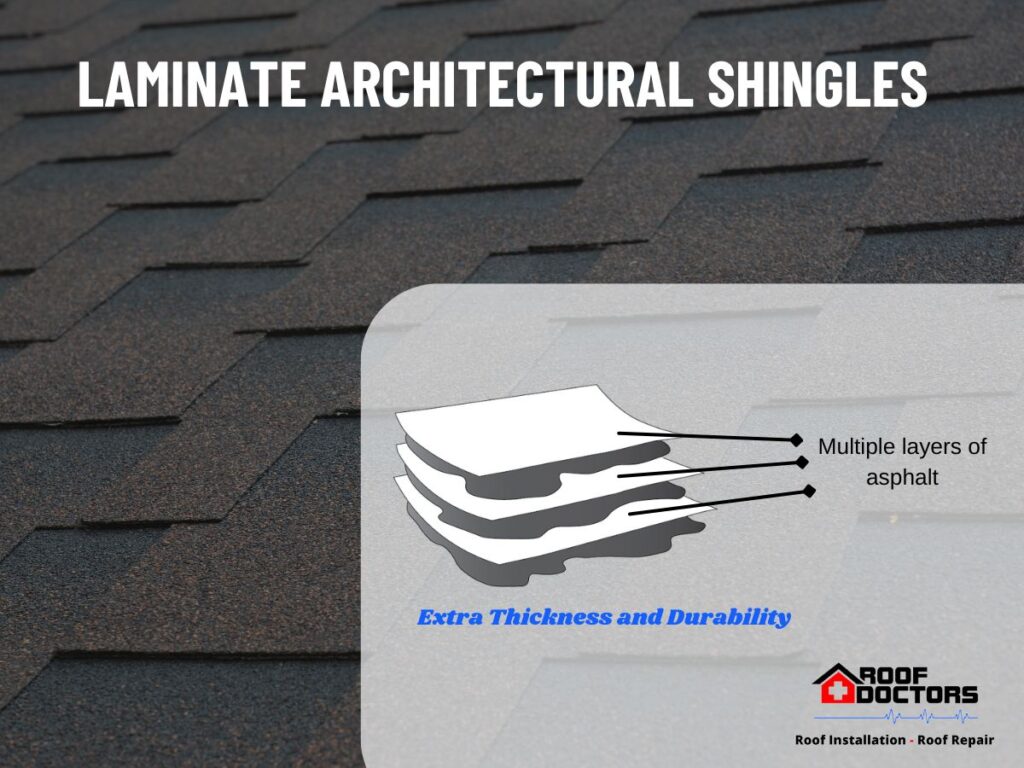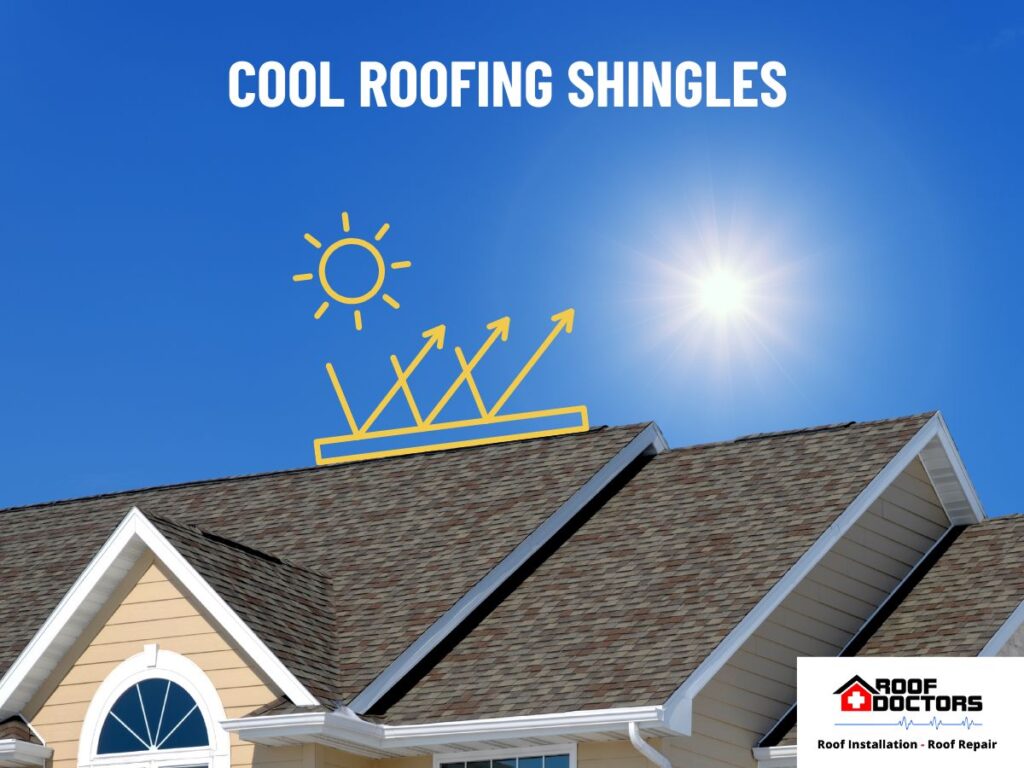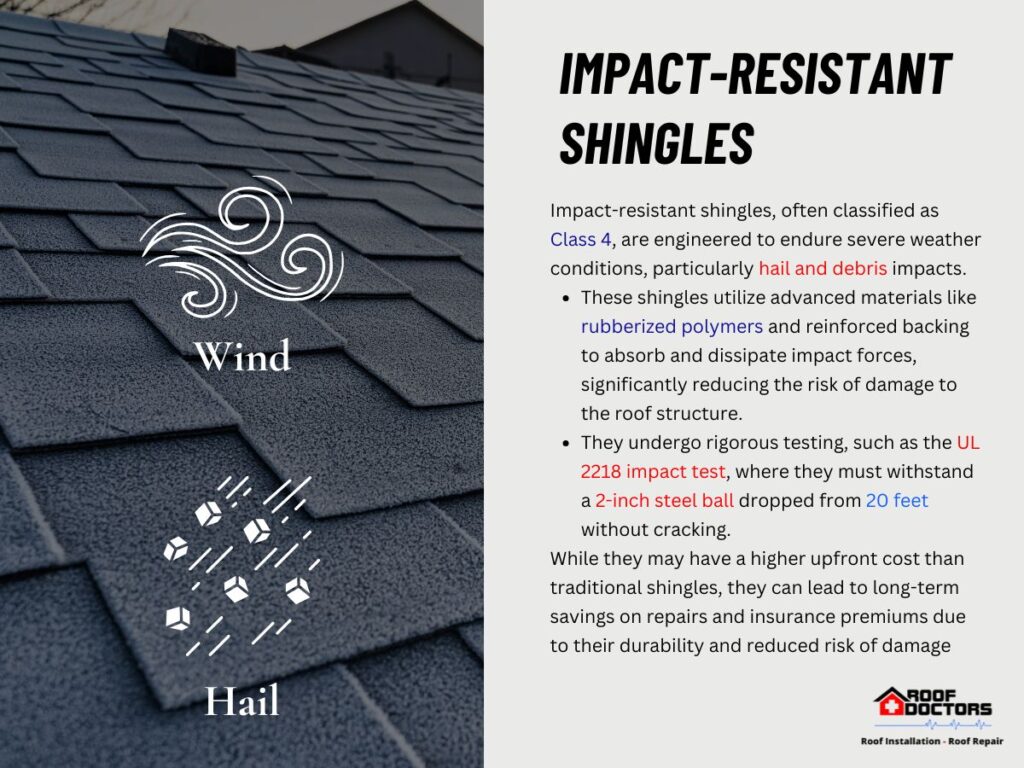Architectural shingles are more than just a roofing material—they’re a blend of style, durability, and long-term value. If you’re looking to elevate your home’s curb appeal while adding a layer of protection, architectural shingles are the perfect choice.
These shingles offer a dimensional, textured look that can mimic high-end materials like wood or slate without the hefty price tag. But it’s not just about looks—architectural shingles are designed to withstand harsh weather and provide better insulation, making them a smart investment for any homeowner.
What Are Architectural Shingles?
Architectural shingles, also known as dimensional shingles, are designed with more layers and materials than traditional shingles, giving them a thicker, more textured look. These shingles are made from asphalt but are constructed to mimic the appearance of more expensive roofing materials like slate or cedar shake. This added thickness not only provides a more attractive look but also increases their durability.
Architectural shingles come in a variety of colors and styles, allowing homeowners to customize their roofs to match their home’s exterior. They are also heavier than traditional shingles, which contributes to their longer lifespan and resistance to weather damage.
Benefits of Choosing Architectural Shingles
There are several benefits to choosing architectural shingles over other roofing materials.
- One of the primary advantages is their durability and longevity. Due to their multi-layered design, architectural shingles can withstand high winds, heavy rain, and even hail. In fact, most architectural shingles come with a 30-50 year warranty, which can provide peace of mind for homeowners.
- Another key benefit is improved energy efficiency. The added thickness of architectural shingles helps insulate the roof, which can reduce heat transfer into your home. This means that in hot summers, your home stays cooler, potentially reducing energy bills.
- These shingles require minimal maintenance, which is a huge plus for homeowners. Proper wood shingle roof maintenance is still essential for a long-lasting roof, but architectural shingles tend to hold up better over time than traditional options.
- Homeowners also love the curb appeal that architectural shingles bring. Their textured design and wide range of colors can elevate the look of your home and increase its resale value.
Choosing Architectural Shingles for Your Roof
Architectural shingles are a popular choice for homeowners when selecting the right roofing materials due to their durability, aesthetic appeal, and versatility. Unlike traditional 3-tab shingles, architectural shingles offer enhanced performance and a more dimensional appearance, often resembling wood shakes or slate. Here’s a look at the different types available and their unique benefits.
1. Laminate Architectural Shingles
Laminate shingles are one of the most common types of architectural shingles. These are created by bonding multiple layers of asphalt, which gives them extra thickness and durability.
This style often mimics the look of natural wood or slate, providing a beautiful textured appearance that enhances your home’s curb appeal. In addition, laminate shingles are known for their long lifespan, typically lasting 30-50 years, making them an excellent investment.

2. Premium Architectural Shingles
For homeowners who want to add a touch of luxury to their homes, premium architectural shingles are a fantastic option. These shingles are designed to closely replicate high-end roofing materials like cedar shakes or natural slate.
Though they come at a higher cost, their heavy-duty construction and sophisticated appearance often justify the investment. Premium shingles are also highly durable, resistant to extreme weather conditions, and can significantly increase your home’s value.
3. Cool Roofing Shingles
If energy efficiency is a top priority, cool roofing shingles are a type of architectural shingle that you might consider. These shingles are specially designed to reflect more sunlight and absorb less heat compared to standard shingles.
As a result, they help to reduce cooling costs during hot months, making them an eco-friendly choice. Many cool roofing shingles come with Energy Star ratings, providing the assurance that they meet high energy efficiency standards.

4. Impact-Resistant Shingles
If you live in an area prone to severe weather, impact-resistant architectural shingles are worth exploring. These shingles are built to withstand hail, wind, and other harsh weather conditions.
Rated by the UL 2218 Impact Rating system, these shingles provide extra protection for your home, reducing the risk of costly roof repairs after a storm. Their durability can also potentially lower insurance premiums in some regions.

Cost Analysis of Architectural Shingles
The cost of architectural shingles varies based on factors like type, brand, and installation complexity, but they generally offer excellent value for their durability and aesthetic appeal. On average, you can expect to pay between $5.50 to $12.00 per square foot, including materials and installation.
- Laminate Architectural Shingles: These are among the more affordable options, typically costing between $5.50 to $8.50 per square foot. They provide a good balance of cost and durability, lasting up to 50 years with proper maintenance.
- Premium Architectural Shingles: Premium shingles are on the higher end, ranging from $8.50 to $12.00 per square foot. The higher cost reflects their enhanced aesthetic appeal and durability, often replicating materials like slate or wood shakes. These shingles can also boost home value.
- Cool Roofing Shingles: Cool roofing shingles are moderately priced, averaging $6.50 to $10.00 per square foot. While slightly more expensive than standard options, their energy-saving benefits can offset costs through reduced cooling expenses.
- Impact-Resistant Shingles: These shingles, designed to withstand severe weather, cost between $8.00 to $12.00 per square foot. Their durability and potential insurance savings make them a solid investment in storm-prone areas.
The Lifespan of Different Architectural Shingles
The lifespan of architectural shingles is one of their standout features, offering excellent durability compared to standard 3-tab shingles. Most architectural shingles are built to last between 30 to 50 years, depending on the specific type and the climate conditions they endure.
- Laminate Architectural Shingles: Laminate shingles typically last around 30 to 40 years thanks to their multi-layer construction, which enhances their resistance to wind, rain, and UV rays. Proper installation and regular maintenance can help extend their lifespan.
- Premium Architectural Shingles: Premium shingles, designed to mimic materials like wood shakes or slate, boast a lifespan of 40 to 50 years. Their heavier construction and high-quality materials make them more resistant to weathering and wear over time, contributing to their longevity.
- Cool Roofing Shingles: Cool roofing shingles have a similar lifespan of 30 to 40 years, offering both durability and energy efficiency. By reflecting more sunlight and reducing heat absorption, they can also help prevent premature roof deterioration in hot climates.
- Impact-Resistant Shingles: Impact-resistant shingles are built to withstand extreme weather, and their lifespan ranges from 40 to 50 years. These shingles are especially durable in storm-prone areas, making them a reliable long-term roofing option.
Maintenance Tips for Architectural Shingles
While architectural shingles are known for their durability, proper maintenance is key to ensuring they last their full lifespan. Here are some simple tips for maintaining architectural shingles:
- Inspect Your Roof Regularly: Regular roof inspections can help you identify small issues before they turn into larger, more expensive problems. Check for missing, loose, or damaged shingles, and address any problems promptly.
- Clean Your Gutters: Clogged gutters can lead to water buildup, which can damage your shingles and shorten their lifespan. Make sure to clean your gutters regularly to avoid this issue.
- Trim Overhanging Trees: Trees that overhang your roof can cause damage by dropping branches or allowing moisture to accumulate. Keeping tree branches trimmed can help extend the life of your shingles.
- Address Moss and Algae Growth: In some climates, moss and algae can grow on shingles, which can degrade the roofing material over time. Use a roof cleaner specifically designed for algae and moss, or hire a professional if needed.
Common Myths About Architectural Shingles
Despite the many benefits of architectural shingles, there are several myths that may cause hesitation for some homeowners. Let’s take a closer look at these myths and the truth behind them.
Myth 1: Architectural Shingles Are Too Expensive
One of the most common misconceptions about architectural shingles is that they are prohibitively expensive. While it’s true that they can cost more upfront than three-tab shingles, the long-term value far outweighs the initial investment. Architectural shingles last longer, require fewer repairs, and offer better protection, making them a cost-effective choice over time.
Their energy efficiency can lead to savings on utility bills, which helps offset the higher upfront cost. With proper wood shingle roof maintenance, architectural shingles can last for decades, saving you from frequent replacements.
Myth 2: Architectural Shingles Are Too Heavy for Most Roofs
Another myth is that architectural shingles are too heavy for certain homes, particularly older ones. While these shingles are heavier than standard options, most homes can easily support the weight of architectural shingles without any issues. If you’re concerned about your roof’s ability to handle the weight, it’s always a good idea to consult a professional roofing contractor. They can assess your roof’s structure and recommend the best solution.
Myth 3: Architectural Shingles Are Only About Looks
Some homeowners assume that architectural shingles are purely for aesthetic purposes and don’t offer any real performance benefits. In reality, architectural shingles are engineered to provide better protection against weather elements, including wind, rain, and hail. Their multi-layered design gives them added durability, making them a superior option in terms of both appearance and functionality.
Metal Roofs vs. Asphalt Shingles: Which is Best for Your Home?
As we’ve seen, architectural shingles offer a stylish and durable choice for homeowners seeking aesthetic appeal and reliability. However, the roofing landscape is vast, with various materials to consider.
If you’re weighing your options, the debate between metal roofs and asphalt shingles is particularly relevant. Each has its unique advantages and considerations that can significantly impact your home’s value and performance. Join us as we delve into this comparison, helping you determine which roofing solution best suits your needs and lifestyle. Your ideal roof is just a read away!


